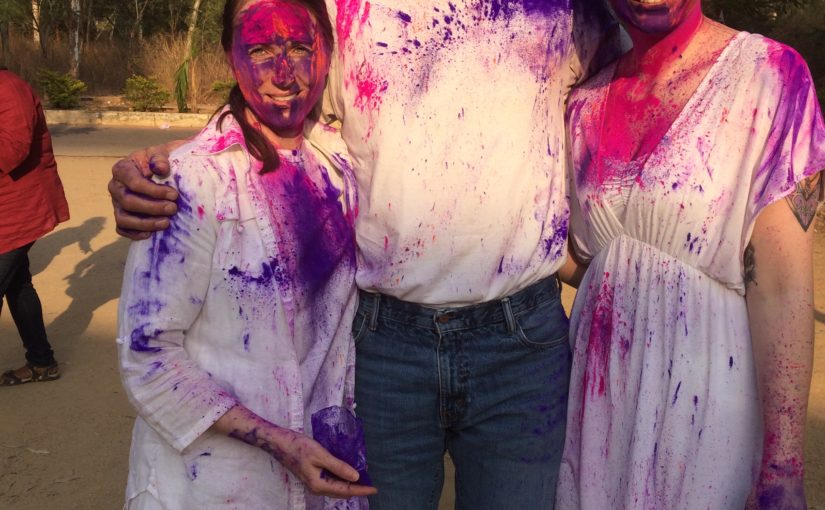The festival of colors, Holi, is arguably India’s most well-known festival. It’s also likely the first “color runs” used Holi as an inspiration.

Holi marks the end of winter and the victory of good over evil — it is also one of the last festivals before the summer heat reaches its full force, with some places in India soaring to above 45 degrees Celsius (113 Fahrenheit). For this native North Dakotan however, the current daily temperature of 36 degrees Celsius (96 Fahrenheit) is already plenty hot.
Thankfully, Holi is often celebrated with water guns, called pichkaris, and in some places even “rain dances” in addition to the essential powdered colors.
The main celebration of Holi begins by 9:30 in the morning and continues throughout the afternoon. Many businesses are closed for this holiday. However, at my university this year classes were still in session, although some elected to play Holi hooky instead. Luckily, I only had morning classes, leaving plenty of time to take part in the festivities of the day.
The only downfall of Holi is after the festival is over, as the color can dye your hair and skin. A few people in my hostel who still had purple tinted faces and pink hair a few days afterward. I still found blue in my hair even after I washed it multiple times. I didn’t find out about the pro-tip until after the festival — applying coconut oil to your hair and skin beforehand helps prevent the colors from staining.
I was also extremely fortunate to have my family there to celebrate with me. Due to the timing of my sister’s spring break, they were able to visit for a week over Holi. It meant a lot to me to be able to share the experience of this popular festival with them.
Holi is a festival of joy and friendship as much as it is the festival of color. While I was not able to celebrate with many of those who are special to me, dousing those who were here with plenty of color made for memories I will never forget.
